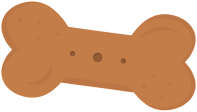This resource is included in the Zoo Animals for EFL. Click here:
https://www.teacherspayteachers.com/Product/Zoo-Animals-Flashcards-for-EFL-3611842
There is a set
of small cards in color for making a sorting activity. Includes the
animals and the food.
Exploring how zoo animals eat provides English learners the opportunity to describe their observations on what and how the animal’s eating habits. I used a pizza box as a sorting mat.
Place the animal cards on the top line of the
box and then have the students place what the animals eat cards under each
animal.
Teaching
English learners about zoo animals incorporates elements of science enhancing
their overall knowledge and understanding of the natural world. Use the set of
worksheets to do their own sorting mat for these animals.
Exploring how
zoo animals eat can stimulate critical thinking as they start coloring and
gluing the cards on the cardboard. It can be an individual lesson or a group
activity.
And
find here a list of what zoo animals eat.
Print
and display the cards to introduce the vocabulary related to what food animals
eat. Place several flashcards on
the board.
Teacher: What is number 1?
Students: It´s a giraffe.
Teacher: What does the giraffe eat? (Have the students guess and say what they know even if
in the native language)
Teacher: The giraffes eat leaves, twigs
and fruit. (Emphasize leaves, twigs, fruit). Continue with the other flashcards.
Place
the food cards and have the students place the common animals that eat that
food.
Sort the food that the animals eat. Have the students make and write
sentences. Give examples.
Teacher: The
kangaroo and the elephant eat grass. They don´t eat fish.
Use
the cards to review countable and uncountable nouns related to the food the zoo
animals eat.
This resource has more to check, go to this blog post:

















.png)
.png)
.png)
.png)
.png)


















.png)
.png)










